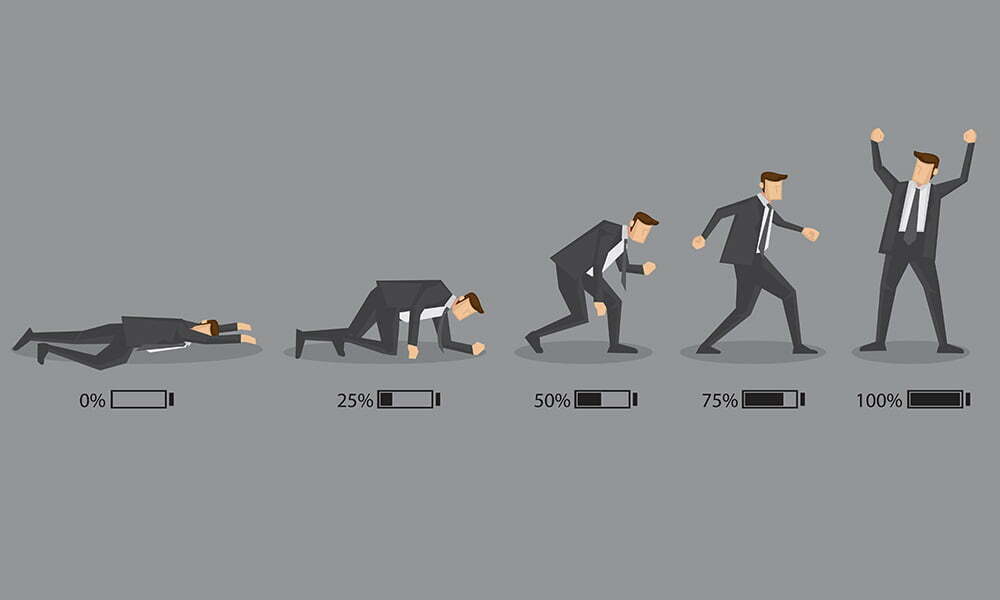THE THREE SURPRISING KEYS TO WELL-BEING: DANIEL PINK INTERVIEWING TOM RATH
Tom Rath is a writer who changes lives. His books – which have sold more than 6 million copies and spent more than 300(!) weeks on Wall Street Journal bestseller lists — have had a massive influence on both individuals and organizations (If you haven’t read StrengthsFinder 2.0 and taken the StrengthsFinder assessment, you owe it to yourself to do it now).
This week, Tom is out with a new book, published through the innovative Silicon Guild. It’s called Are You Fully Charged? The 3 Keys to Energizing Your Work and Life and it looks at the science of daily experience – the day-to-day steps we can take to lead happier, healthier, and more meaningful lives. Like his previous books, this one comes packed with the latest behavioral and medical research along with an array of practical tips to put those findings into action.
I asked Tom to answer a few questions about the book exclusively for newsletter readers. Here’s an excerpt of our conversation.
Pink: What are the three keys you’ve identified – and why do they matter?
Rath: This new book focuses almost exclusively on daily well-being — things people can do today and tomorrow — versus the typical focus on all the things that are important over decades or a lifetime. What’s remarkable about this new research on daily well-being is that it tells a very different story (compared to decades of research on long term life evaluation) and is infinitely more practical.
Pink: As you analyze daily well-being, you emphasize that pursuing happiness and pursuing meaningfulness are two distinct notions. What’s the difference?
Rath: I’m increasingly convinced that the “pursuit of happiness” is not only misguided, but potentially damaging. Most people should stop chasing their own happiness today and do something that improves the life of another human being instead. This is simply a much faster path to well-being for yourself and others. That is my basic distinction: improving the life of another person is inherent in meaning, but not happiness. This is why every hour invested in meaningful work has a greater return.
Pink: You write “[I]n most cases, what you will be most proud of a decade from now will not be anything that was the result of you simply responding.” Yet most of us spend our days in response mode – replying to emails, answering phone calls, going to meetings. What are some suggestions for eluding that trap?
Rath: I would start by asking, “What truly needs to interrupt me if I am in the midst of something important?” There is really no reason that every text message, phone call, email, Facebook notification, tweet, and breaking news alert deserves your attention the minute it arrives. Start by turning almost all notifications “off” by default. Then ask which ones truly deserve to break into the flow of an important conversation with a loved one or disrupt meaningful work.
Pink: The research you look at in Are You Fully Charged? also reveals the right balance between focusing intensely and taking a break. What does that balance look like?
Rath: Top performers work in bursts. This applies to athletes, teachers, and those of us who spend our days in front of a computer screen. As a general guideline, taking a 10-minute break every hour is a good idea for your productivity and creativity. But if you spend your day sitting in a chair, it may be a better idea to take very brief breaks every 20 minutes. Essentially, the more you move the better you think.
Pink: I was surprised by the evidence showing how dramatically interactions with others affect our well-being and our performance. Any advice on improving our daily interactions?
Pink: In the final section of the book, you write, “Sitting may be the most underrated health threat of this generation.” Yet I’d bet that most people reading this right now are on their butts. What can we do to sit less and move more?
Rath: Stop worrying about exercise. Sitting less and taking a few more steps each day is a better place to start. It can be as simple as pacing around whenever you are on the phone, finding ways to work on a laptop while you stand occasionally, or settling for a parking spot that adds a few extra steps instead of circling the lot to minimize activity. Once you have added enough activity to hit 10,000 steps a day, then worry about the (more intimidating) thought of daily cardiovascular exercise.
